Cloth Diapers 101: How to build a cloth diaper stash on any budget is a three-part series aimed at helping you choose a cloth diapering system. This series explains the lingo, costs, and benefits to the many different types of cloth diapers.
Pockets, AIOs, covers, fitteds, and prefolds. I needed a glass of wine with a side of smirk just to decipher the diaper lingo associated with cloth nappies. No one told me that being a new mom on a budget would require a degree in diaper technology. Grumble.
My questions were simple. How much moolah do the different cloth diaper systems cost? How many cloth diapers would I need? Which brands are best? And WTF (What The Fabrication) is an AIO diaper?
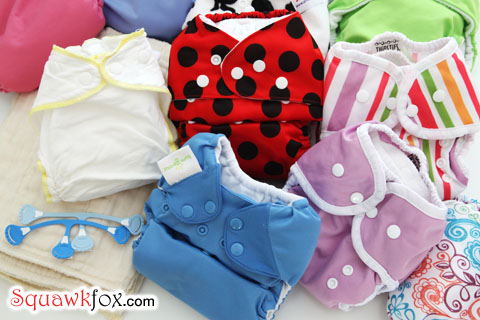
After throwing some serious side-eye and flipping off a few blogs for infecting the interwebs, I finished my glass of bubbly, got off my moral high horse (which is really just a slip-covered IKEA sofa), and devised an experimental diaper plan.
Squawkfox Cloth Diaper Experiment:
- Buy a bunch of cloth diapers.
- Test various diapering systems.
- Calculate the cost of each system.
- Find some kick-ass brands.
- Report my findings.
And so I bucked up and bought a few diapers of each type, trying some big brands along the way. Carl joined in on the fun, and so did baby Chloe. Together we wrapped, snapped, stashed, giggled, and washed a wacky stack of cloth nappies just to share (and reveal) the real hits and misses.
Learn from our mistakes. Here’s how to spend your cash on a new stash of cloth diapers.

Price Check: Are cloth diapers worth it?I crunched the nappy numbers and did the diaper math. Turns out one diapering method could save your family $1,799 with one child. Find out which diaper does the job for less.
Diaper System 1: Prefold with cover.
The best bang for your diaper dollar is the prefold with a cover. A prefold is a rectangular piece of cotton cloth that’s thicker in the middle.

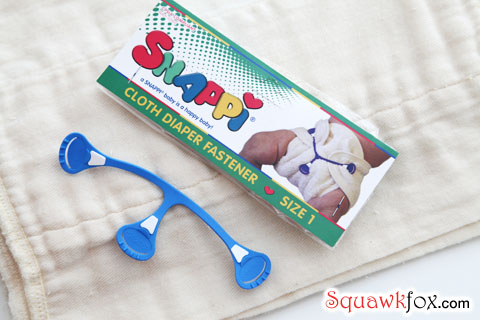
Pros: Priced at around $2 to $3 per prefold and wrapped in a simple $13 diaper cover (see Diaper Covers, below), this system is BY FAR the cheapest cloth option on the market today. Cotton is absorbent and breathable.
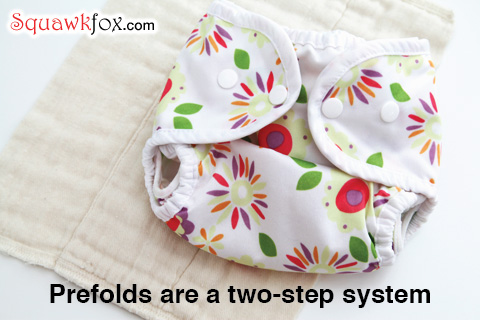
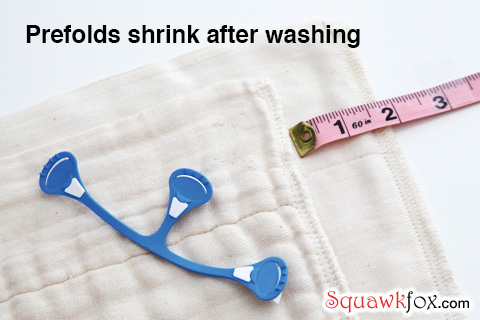
Stash Size Needed: You’ll need about 24 prefold diapers and 4-6 covers for babies aged 0-6 months. Fewer diapers are needed for older babies. Plan on doing laundry every 2 days.
Total Cost: 24 OsoCozy Prefolds ($50), 5 Thirsties Covers ($65), and a pack of Snappi fasteners ($8) cost around $125 for a newborn diaper stash. Budget to buy this stash again once your kid hits 15-20 pounds for a total of $250. That’s a bargain compared to other systems, people.
Prefold Diaper Bottom Line
I loved prefolds for their low cost, ease of laundering, and the reusability of the covers.
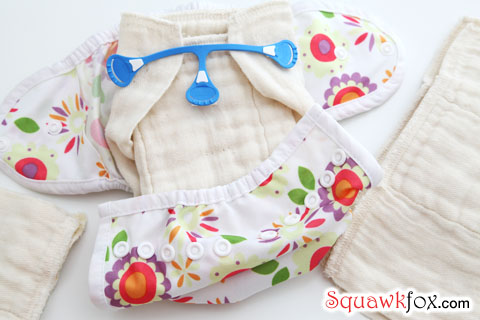
Diaper System 2: Fitted with cover.
Fitted diapers are shaped like disposables, but made of fabric with elastic gatherings in the legs and waist. A two-step diapering process, they need a waterproof cover to keep the business where it belongs — in the drawers.
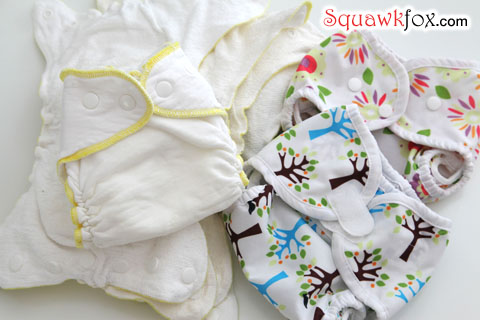


Stash Size Needed: You’ll need about 24 fitted diapers and 4-6 covers for babies aged 0-6 months. Fewer diapers are needed for older babies. Plan on doing laundry every 2 days.
Total Cost: 24 Cotton Fitted Diapers ($312) and 5 Thirsties Covers ($65) total $377 for a newborn diaper stash. Budget to buy this stash again once your kid hits 15-20 pounds for a total cost of $754.
Fitted Diaper Bottom Line
I get a little grumpy every time I need to reach for a fitted diaper since this system is a full-on two-step process.
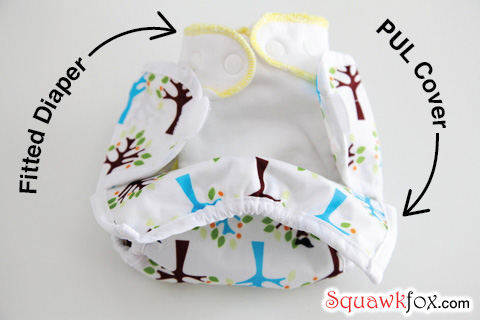
Step Two: Install the diaper cover.
That’s a lot of snaps to fasten. Heaven help you if it’s 2-freaking-AM and your kid’s sleeper also has snaps. You’ll be snapping everything shut until 3:30AM. Forget sleeping, you’re life will be a freaking snap fest. No, I’m not bitter.
Since Chloe was a preemie, I appreciated the close fit of fitted diapers. However, as she got older, this diaper became her nemesis. The kid hates feeling wet, and since the fitted sits close to the body, the dang diaper ALWAYS feels wet. A great diaper for potty training. A terrible option for night time sleeping. I plan on ‘Office Spacing’ this system once Chloe grows outta ’em.

Make your own diaper sprayerClean the mess from your cloth diapers for less with this simple DIY Cloth Diaper Sprayer. Illustrative plumbing photos show you the 8 easy steps.
Diaper Covers: PUL vs. Wool.
To contain the moisture and other messes (cough) within the prefold and fitted diapering systems, you’ll need a couple of diaper covers to keep things under wraps.
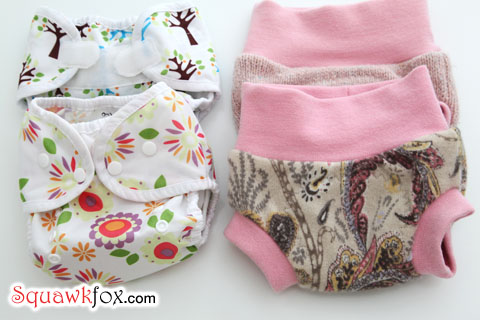
PUL Diaper Covers
The more affordable diaper wraps on the market are made of polyurethane laminate (PUL) fabric. Many companies sell PUL covers for around $13 each. Don’t confuse PUL covers with old skool plastic pants — PUL is pliable and far more comfortable than crunchy plastic.

Pros: A single PUL diaper cover can be used several times if not soiled. Just rinse, wipe dry, snap to a baby’s bum, repeat. Easy.
Cons: Sold in both ‘one size’ and sized options, you’ll need to find a good fit to be sure the stuff stays inside the diaper cover.
Wool Diaper Covers
Being a bit of a crunchy granola mom, I wanted to give wool covers a go. A natural and breathable option, wool covers are touted as waterproof since lanolin acts as the moisture barrier. Each cover will set you back $25 to $35 a piece. Not cheap.
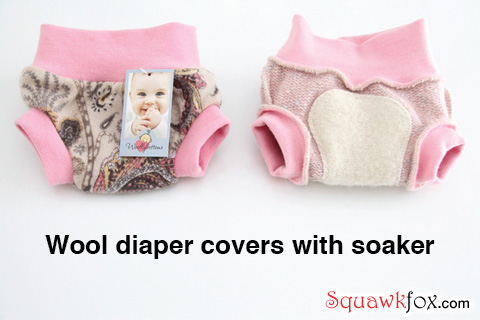

Cons: While I liked the idea of wool, in practice I found the cover to be a hassle. Wool wraps must be hand washed, and mine often wicked wetness through to clothing. I tried a product called Woollybottoms — a similar brand is the Disana 100% Organic Wool Diapers Cover/Soaker/Over Pants.
Diaper Cover Bottom Line
You’ll need 3-6 covers to diaper a newborn if you’re planning on doing laundry every two days. Priced at under $15, my preference goes to PUL diaper covers for affordability and ease of use. However, having a wool cover on hand was helpful when diaper rash dropped by for an unexpected visit. The breathability of wool cleared up the rawhide situation fast.
 Series: Build a cloth diaper stash on any budgetWhat type of cloth diapers should you buy? I share the winners and losers based on price, convenience, and a little experience. Check out Part One, Part Two, and Part Three.
Series: Build a cloth diaper stash on any budgetWhat type of cloth diapers should you buy? I share the winners and losers based on price, convenience, and a little experience. Check out Part One, Part Two, and Part Three.
Cloth Diapers 101: How to build a cloth diaper stash on any budget
Be sure to follow the whole cloth diaper series!
- Part One: Cloth Diapers 101: How to build a cloth diaper stash on any budget
- Part Two: Cloth Diapers 101 Part Two: Build a cloth diaper stash on any budget
- Part Three: Cloth Diapers 101 Part Three: How to build a cloth diaper stash on any budget
Your Turn: What is your favorite cloth diaper system? Why?
Love,
Kerry
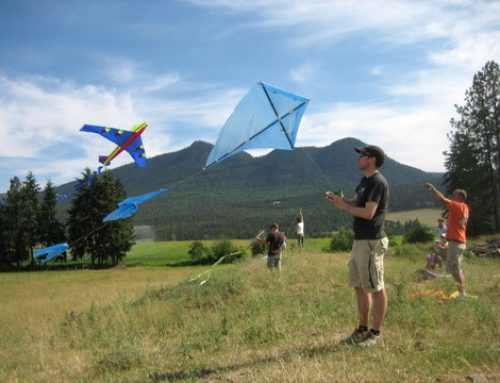


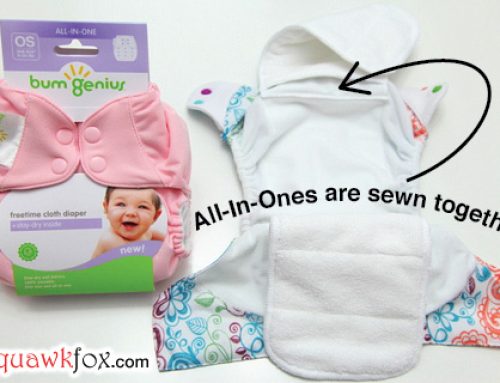
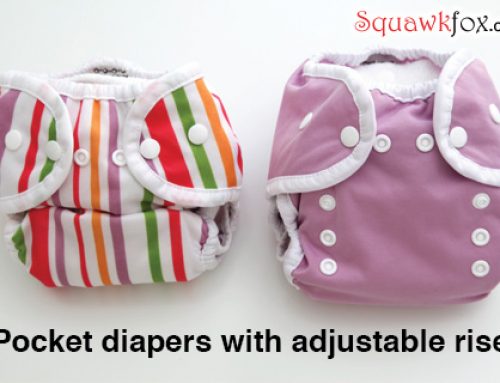
I’m impressed you’ve been able to go through all the different diapers. That’s a lot of work!!!
When I was deciding on diapers I remember going to Cottonbabies.com to read up on the pros and cons of cloth diapering and it really was a great resource for comparing a variety of items. I ended up selecting the BumGenius (because they worked from 7-35 pounds, they were well reviewed and then they were having a buy 4 get 1 free promo (sadly they aren’t cheap)). Both my husband and I LOVE them. We also love that we can use them as swim diapers (if you remove the liner) so that was additional money we saved as we are in the midst of the toilet training phase it was a great experience!
We did a ton of research as well. We convinced our daycare to allow us to do cloth diapers provided they were easy and quick to use, which left us with pockets or AIOs as our options.
We ended up getting SunBaby diapers for daycare (so that they have all the same diaper to use and they don’t have to learn more than one), which are incredibly inexpensive, and which we’ve had a lot of luck with.
At home, we use a mixture of:
BumGenius Pockets, FuzziBunz Pockets, BlueBerry Pockets, and Rumparooz Pockets, which we found on diaperswappers for the most part.
My daughter is now 18 months and we were fortunate to have a friend that threw us a baby shower where we received a lot of cloth diapers. After trying many different kinds my favorites have to be the “flip” covers – a one size PUL that comes with an insert and can be used with fitteds and Prefolds as well. I was also fortunate to find some one size fitteds which reduced the cost a bit.. My other favourite is bum genius one size pocket diapers with snaps. A little pricier but well worth it especially since you can add extra stuffing for night time.
We use prefolds and wool covers because anything with stay-dry causes serious diaper rash.
Tip for wool- Lanolize – this keeps the wool from wicking so bad.
Tip number two – goodwill. I buy 80% or more wool sweaters at goodwill for $3 a piece and can make 2-3 covers out of them! Lots of DIY tutorials on google. So if you can sew a little (like a couple straight lines) you can make a diaper cover for as little as $1!!
Or, if you can crochet or knit, you can even buy wool yarn and make some that look like super cute little undies.
Though I never have gotten wool to work at night – we buy a cheap-o Walmart diaper for that. 🙂
Oh, and one more thing – While the diaper sites will tell you different – 6 one-size Gerber prefolds for $6 really will work just as well as those $3 prefolds. And last from NB to potty training.
I also used flour sack towels as flats!
We used pockets (mostly Fuzzibuns with a few cheap Chinese made ones later) for daycare and bedtime, and uncovered fitteds (Goodmamas, on sale, ESbaby, Swaddlebees) around the house. Pockets can be stuffed with extra microfiber (car towels, like you’d get at a hardware store) or even a prefold, or whatever you have around. Uncovered fitteds will seep a bit if they get full enough, but they’re a nice way to get some air to your kid’s bottom. I also learned to fasten prefolds from behind when my son was trying to crawl away, and put a cover on the next time I could catch him. He’s four now, and I’m seriously envious of you cute PUL, the older prints were cottony on the outside, and would wick fairly badly, as well as being hard to find. Now every brand makes a cute print, and Fabricland sells the stuff.
Hey Kerry –
Have you considered a diaper service? My mom used it with me and said it was great.
I am at the stage right now where I am looking desperately at what cloth diapers I want to use. because of pressure from family (including the husband and all the grandparents) our choices are looking to be either AIO or pocket systems… and I have checked kijiji in my area and ebay and haven’t found a single ad for used ones in my area!! I have considered trying Giggle Life (I can get 38 diapers and 76 inserts for $250CND which is way cheaper than the other systems that I have found, and they are made and shipped from Canada) or even getting a few AIO Grovia that are available in my area.
I also checked out the diaper service available in my area, and at $28/week PLUS having to buy a bunch of the covers (and they aren’t inexpensive either)… it seemed cheaper just to buy and launder on my own…
We use a combination of pockets, fitted with PUL and wool covers, and prefolds with PUL covers. We have an assortment of a few brands and I definitely have some favorites! Love the Bummi’s super lite cover. I guess it just matters on your baby and what fits best (hence the assortment). 🙂
Wow! Have diapers ever changed! We had about 5 dozen pre-fold diapers, vinyl pants and 8 pairs of pins. We spent under $100 for all this and it lasted through 3 kids.
Those pre-fold diapers are durable. I still have about 10 that are in good condition, in use as rags (youngest 2 kids are 17). When your pre-fold diapers get ratty on the edges, just do a zig zag stitch on your machine to keep them from fraying further and getting tangled on stuff in the wash.
And for what it’s worth — diapering 3 babies old-style, not a single pin prick with a diaper pin — to the them or me! Sticking a baby with a pin is highly exaggerated!
I did diaper service for the first year with myson, and switched to a homemade fitted with Motherease brand PUL covers and a snappi. I went to the thrift store and bought flannel sheets for about $3 each for the fabric. (hey, they’re being pooped on!) the Motherease covers are $17 each, but I’m using them on my second child. For a batch of 30 diapers that fit up to 20 lbs, I paid a whopping 26 dollars for elastic, thread and everything. Free patterns abound online. $8on snappis and $98 for 4 covers. I have to change my kid often, but letting her marinate in her own excrement seems really gross to me. Not having to change your kid for the duration of a football game isn’t a selling point foe me.
Should also mention at laundering time, I found peroxide to be hugely helpful. Superstore’s “green” bleach is just high test peroxide, and is about $3 for a jug. It doesn’t remove the colour of the stain, but there is no smell whatsoever.
Can you not get the old fashioned cloth nappies that you fold yourself, like I used on my girls,(granted they are now 20) they were so easy to wash and you could have them all folded up ready to use. All you needed was just a cover to go over the top of them. They were so easy and I can say that as I had twins, and at 2am in the morning you dont want to muck around. Also when finished they make really good soft cleaing cloths.
shellb, do you mean flats or prefolds? Prefolds are still really common, and flats are definitely available, but more of a PITA to use. Green Mountain Diapers has flats, and I’ve heard of people using receiving blankets, too. http://clothdiapers.blogspot.com/2011/04/almost-free-diapers-how-to-diaper-your.html has some information on very low cost diapering, and covers stuff like this.
Just some helpful info for those who can. If you have the option of hanging out your laundry in the summer time or when the sun is out it will naturally bleach out the stains that develop on diapers. I used the prefold diapers a long time ago and it worked wonders when weather permitted me to hang diapers outside on the line. Breezy days were also welcome. It also gave me a breath of fresh air and a minute to think about other things. A sunroom or sunny room may even help in this area if it’s too chilly outside but sunny. Just a thought.
I use the Sandi’s diaper system from Motherease here in Canada and love them. I bought the sized diapers so small for the first year and large for the next two years. One set (24 diapers, 12 liners and 4 plastic pants) cost about $350 they come in a variety of colors and are so cute. I am now using the same system I bought for my first boy on my second boy and they are working great. I would recommend buying extra plastic covers (4) to make it easier. Here is the website.
http://www.mother-ease.com/cloth-diapers/sandysdiapers/
Happy diapering.
We use prefolds and I have never had to do any type of origami folding with these. I also made my own pattern for fitteds and sewed my own. Made some recycled wool covers from sweaters at the thrift store. Never had an issue with these wicking as long as they are lanolized and I only had to wash about once a month or when they would stop smelling fresh after a good airing out. Really having about 4 of these to rotate through was more than enough. I just change a diaper, air out the cover if it had gotten wet on the inside and put a fresh one on. After about 2hrs the wool cover was dry and smelled nice and fresh, when it stops then it’s time to wash. We use pull up ones over thicker underwear for potty training too. I also like fleece covers.
I got a great score from a friend on her used diapers which were bumkins and I did like those. There are now so many cute one size options that make me really excited! I just got four flip covers that are one size. And I have some pockets which have microfleece to keep the stay dry. If I needed for baby to feel dry I just cut up some thin fleece blankets into rectangle pieces and used those as a stay dry liner so baby didn’t feel wetness. Nice and cheap option. I love cloth and wish we would have done it with our older ones. I am due very soon with another little one and am looking forward to treating her to some new cute squishy diapers.
You have listed a large number of diapers and accessories. I am thankful to you for the information
We are starting with a mix of Pocket Diapers and Prefolded. Babies in our family tend to start out at 9 lbs+ (both of us), so probably going to use 7th Generation for a week or two and then go to the one size cloth stuff. We also decided to have a lot of our diapering supplies on our baby registry to try to save as much money as possible.